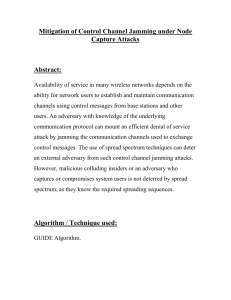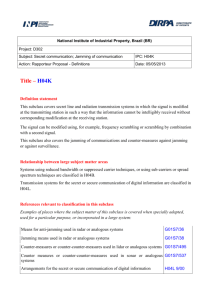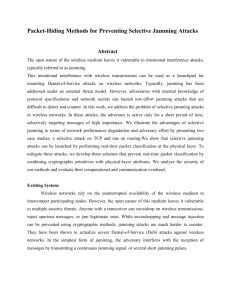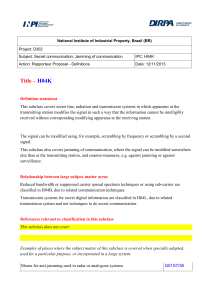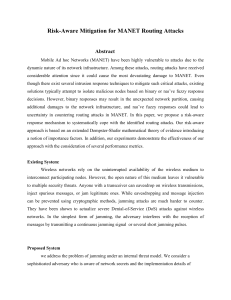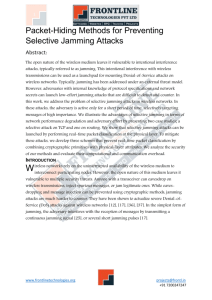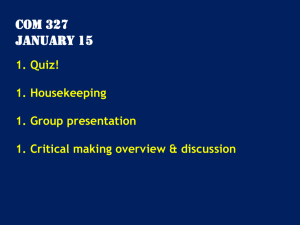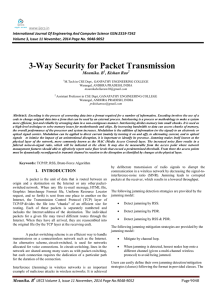Abstract - ChennaiSunday
advertisement
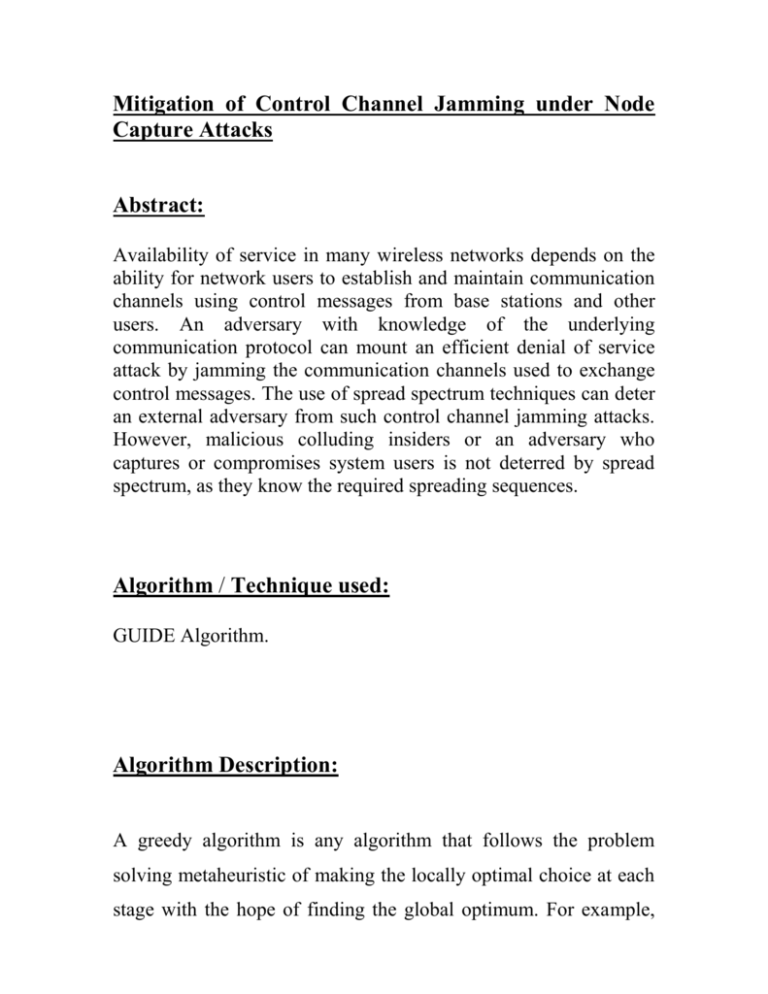
Mitigation of Control Channel Jamming under Node Capture Attacks Abstract: Availability of service in many wireless networks depends on the ability for network users to establish and maintain communication channels using control messages from base stations and other users. An adversary with knowledge of the underlying communication protocol can mount an efficient denial of service attack by jamming the communication channels used to exchange control messages. The use of spread spectrum techniques can deter an external adversary from such control channel jamming attacks. However, malicious colluding insiders or an adversary who captures or compromises system users is not deterred by spread spectrum, as they know the required spreading sequences. Algorithm / Technique used: GUIDE Algorithm. Algorithm Description: A greedy algorithm is any algorithm that follows the problem solving metaheuristic of making the locally optimal choice at each stage with the hope of finding the global optimum. For example, applying the greedy strategy to the traveling salesman problem yields the following algorithm. Existing System: The use of distinct, dedicated communication channels to transmit data and control traffic introduces a single point of failure for a denial of service attack, in that an adversary may be able to jam control channel traffic and prevent relevant data traffic. Hence, it is of interest to design control channel access schemes which are resilient to jamming. We map the problem of providing resilient control channel access under jamming to that of secure communication channel establishment. We propose the use of random key distribution to hide the location of control channels in time and/or frequency. We evaluate performance metrics of resilience to control channel jamming, identification of compromised users, and delay due to jamming as a function of the number of compromised users. Proposed System: We propose a framework for control channel access schemes using the random assignment of cryptographic keys to hide the location of control channels. We propose and evaluate metrics to quantify the probabilistic availability of service under control channel jamming by malicious or compromised users and show that the availability of service degrades gracefully as the number of colluding insiders or compromised users increases. We propose an algorithm called GUIDE for the identification of compromised users in the system based on the set of control channels that are jammed. We evaluate the estimation error using the GUIDE algorithm in terms of the false alarm and miss rates in the identification problem. We discuss various design trade-offs between robustness to control channel jamming and resource expenditure. Hardware Requirements: • System : Pentium IV 2.4 GHz. • Hard Disk : 40 GB. • Floppy Drive : 1.44 Mb. • Monitor : 15 VGA Colour. • Mouse : Logitech. • Ram : 256 Mb. Software Requirements: • Operating system : - Windows XP Professional. • Coding Language : - Java. • Tool Used : - Eclipse.
